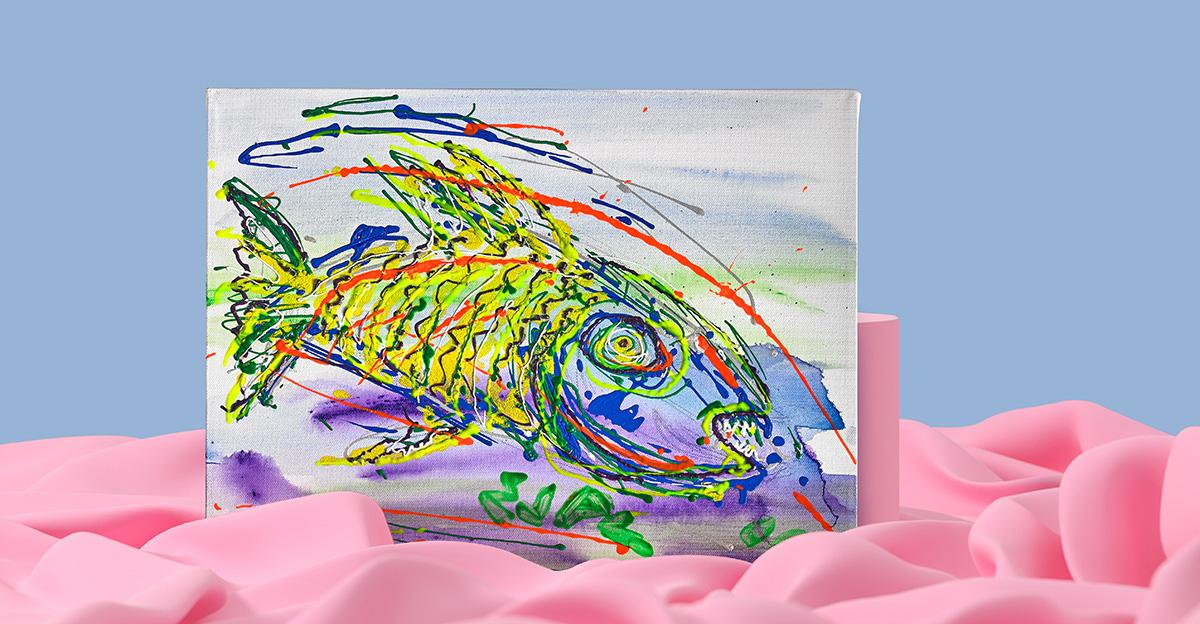Jackson Pollock literally splashed onto the American art scene in the 1940s and 50s, eventually becoming one of the best-known modern artists of all time. Known for his innovative drip, splash, and pour styles of painting, Jackson Pollock began experimenting with liquid paint in the 1930s. Working with resin-based enamels or household paints, rather than artist-quality paints, Pollock used everyday objects ranging from sticks to syringes. Pollock secured a canvas to the floor and splashed, dripped, dropped, and poured his paint downward and from all sides to create incredible, colorful, textured works of art.
Pollock’s technique is considered the launching point of the action painting movement. This dynamic process involved quick and spontaneous brushstrokes that embraced the accidental drip or paint spill. The movement encompassed the American Abstract Expressionists.
Jackson Pollock Lesson Plan
In addition to studying the artist and his major works, students will be challenged to employ several of the most critical elements of art, including:
- Visual components of color, such as hue, value, and intensity
- Texture, or the way the surface of a piece looks
- Distance, directionality, and width of lines
- Shape, or form, of the work
- Center of interest, or focal point
Students begin by applying an acrylic wash to their canvases and selecting a color palette. Then they’ll use squeeze bottles filled with paint to build the designs. They can use a variety of colors and create their own custom textures. Continue to layer until the piece is complete, keeping in mind that sometimes less is more. A coat of varnish seals these modern masterpieces.
Jackson Pollock Expressions Lesson Plan
Follow the link above for the full art lesson plan featuring step-by-step instructions, a complete materials list, and a photo example of the finished product. Your students can experiment with Pollock’s revolutionary techniques and explore the fluid quality of paint. This plan is designed for students in grades 5-12.






[…] Reference 4 […]